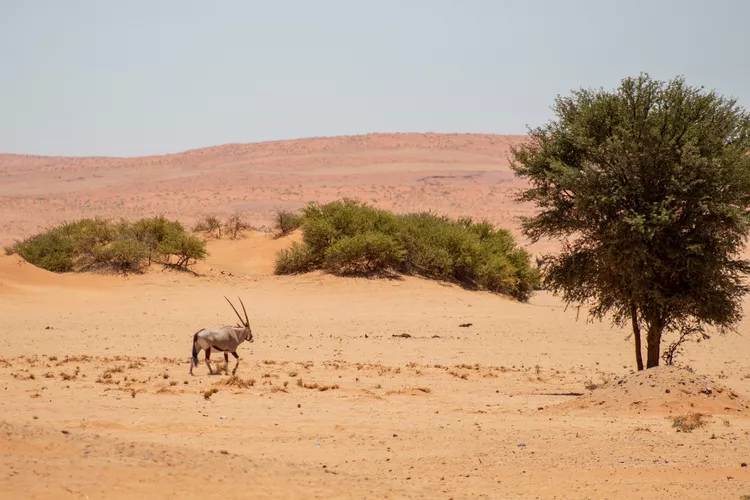1. Overview of the Skeleton Coast
Namibia’s Skeleton Coast offers unspoiled nature, incredible wildlife, and unique cultural experiences. This article explores the highlights of this remarkable destination.
2. Landscape and Name Origins
Christened by the San Bushmen as “The Land God Made in Anger,” the Skeleton Coast is a formidable landscape characterized by soaring dunes and icy waters. Its harsh conditions have led to many shipwrecks, making it a site rich in maritime history.
3. Attractions and Activities
The Skeleton Coast is split into the National West Coast Tourist Recreation Area and Skeleton Coast National Park, where access is limited to protect its pristine environment.
4. Wildlife Experience
Despite its arid setting, the coast is home to various desert-adapted wildlife, making it a prime location for nature enthusiasts.
5. Historical Shipwrecks
The Skeleton Coast is notorious for its shipwrecks, including the famous Dunedin Star and Eduard Bohlen. These wrecks add to the captivating history of the region.
6. Encountering the Himba Culture
Visiting Himba villages provides insight into their traditional way of life, which has preserved its cultural significance over the years.
Namibia’s Skeleton Coast is about as far off the beaten track as it’s possible to get. Bordered by the Atlantic Ocean, the region extends southwards from the Angolan border to just north of the coastal town of Swakopmund — a distance of some 300 miles/500 kilometers.
The Land God Made in Anger
Christened by the San Bushmen as “The Land God Made in Anger,” the Skeleton Coast is marked by high, dun-colored dunes that dramatically descend into the Atlantic. The Benguela Current keeps the ocean icy, and the collision of cold seawater with hot desert air creates thick fog that can obscure visibility. The treacherous conditions have led to thousands of shipwrecks, leading to the region being littered with remnants of over 1,000 vessels, thus earning its eerie name from the bones of washed ashore southern right whales.
A Remote Tourist Destination
The Skeleton Coast is both bleak and inaccessible; it nevertheless captivates the imagination of travelers. It serves as one of Africa’s great untouched wildernesses, providing a unique opportunity to experience nature in its unadulterated form. The coastline is divided into the National West Coast Tourist Recreation Area, which is more accessible and requires a permit, and the Skeleton Coast National Park, known for its wild terrains. The northern section restricts access to only 800 visitors per year, making visits exclusive and to arrange a fly-in safari, resulting in an expensive adventure.
Henties Bay

Located an hour’s drive north of Swakopmund, Henties Bay is the only significant town on the Skeleton Coast, making it a natural stop for travelers. It is particularly popular among anglers, boasting several fishing spots detailed in maps distributed by the Henties Bay Tourist Information Office. Accessing these spots requires a 4×4 vehicle and some sand driving experience.
Common species targeted include silver kabeljou (kob), west coast steenbras (mussel-cracker), and galjoen. Additionally, shark fishing is popular, but it’s crucial to observe the law mandating the release of all shark species back into the ocean alive. Limits on size and catch apply to all types of fishing, while non-fishing family members can enjoy walking trails and beaches.
Cape Cross Seal Colony

Located 40 miles/60 kilometers north of Henties Bay, the Cape Cross Seal Reserve is home to the largest breeding colony of Cape fur seals globally, with numbers exceeding 200,000 during peak breeding season (November to December). Visitors can observe these seals from a 650 feet/200 meter walkway, although the experience is marked by the strong smell from the colony and the cacophony of vocal seals.
Desert-Adapted Wildlife

Despite its harsh conditions, the Skeleton Coast is teeming with unique desert-adapted wildlife. Lodges such as the Hoanib Skeleton Coast Camp offer guided game drives to explore the dunes and oasis areas, where many species thrive. Look out for Hartmann’s mountain zebra, gemsbok, springbok, and steenbok; predators such as black-backed jackals and the rarer brown hyenas can also be spotted. Moreover, there are adaptations visible in the desert elephants, desert rhinos, and desert lions that roam these arid terrains.
Ill-Fated Shipwrecks

The Skeleton Coast is known for its historic shipwrecks, caused by hidden reefs and dense fog. Among these are the notorious Dunedin Star and Eduard Bohlen. The Dunedin Star, which ran aground in 1942 while on its way to Egypt during World War II, sparked a rescue operation that saw several vessels dispatched to assist the stranded crew, though tragically some lives were lost. The Eduard Bohlen, a cargo ship that met its fate in 1909, now rests far inland due to advancing desert sands.
Himba Villages

Several tours in the Skeleton Coast area offer visits to remote villages inhabited by the Himba, the indigenous tribe of the Kunene region. They lead a semi-nomadic lifestyle, herding cattle, sheep, and goats, and their culture remains largely untouched due to their isolation. Visiting these villages allows for an authentic experience and insight into the Himba’s traditional customs, including their unique dress and social structure.





